If you’re looking for a houseplant to add a bit of color to your home, it’s not surprising you’ve stumbled across Anthurium. This tropical species is among the most popular indoor plants thanks to its beautiful flowers and has been selectively cultivated for an impressive range of different bloom colors.
But how do you make sure yours thrives? Keep reading for Anthurium care tips and everything you need to know about growing one in your own home!
| Common name(s) | Anthurium, flamingo flower, flamingo lily, painter’s palette, laceleaf |
| Scientific name | Anthurium andraeanum |
| Family | Araceae |
| Height and spread | Up to 18 inches tall and 12 inches wide |
| Light | Bright indirect |
| Soil type | Aroid soil |
| Water | Keep lightly moist |
Disclosure: If you shop from my article or make a purchase through one of my links, I may receive commissions on some of the products I recommend.
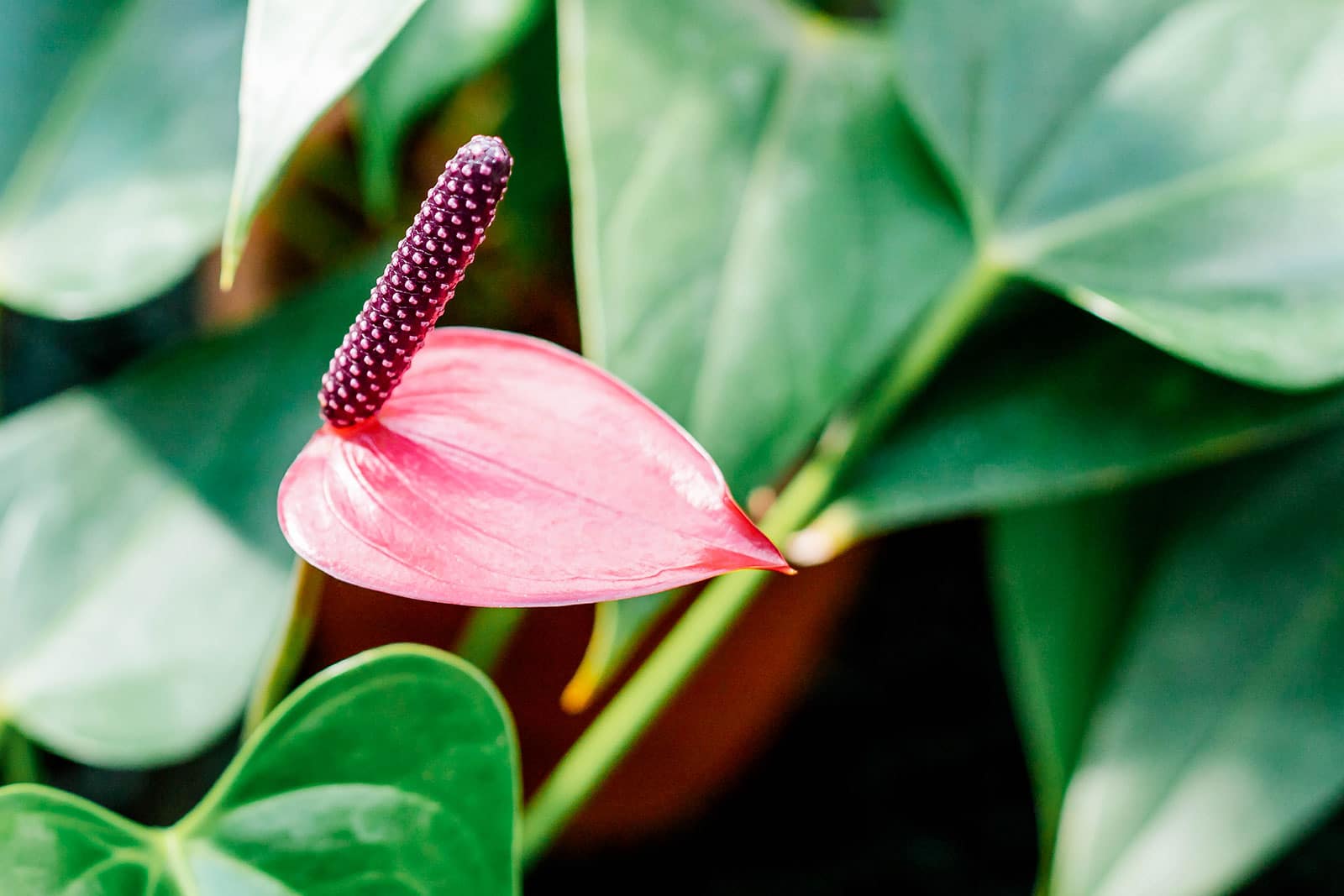
About Anthurium andraeanum
Description
The genus Anthurium is a member of the family Araceae, the aroids, which are characterized by their flowers. The flowers, known as spathes, consist of a long spadix (flower spike) and a leaf-like covering (called a bract).
In most other aroid plants (like Philodendron gloriosum, Philodendron ‘Pink Princess’, Alocasia ‘Polly’, and other Alocasia varieties), this flower is white and not much of an eye-catcher—the plants are grown primarily for their foliage.
Anthurium andraeanum is an exception. Also known as flamingo flower, flamingo lily, laceleaf, or painter’s palette, this houseplant is popular specifically due to its lovely blooms. In fact, it’s so well-known that “Anthurium” usually refers to Anthurium andraeanum specifically, even though it’s the name for the entire genus.
Related: Make Anthurium Clarinervium Thrive: Expert Care Tips for Beginners
You’ll recognize an Anthurium by its large, vaguely heart-shaped green leaves and especially its shiny, leathery flowers. Some people might even say Anthurium flowers look plastic or almost fake—they’re that perfect. And because the “flowers” are actually modified leaves, they provide long-lasting color on the plant.
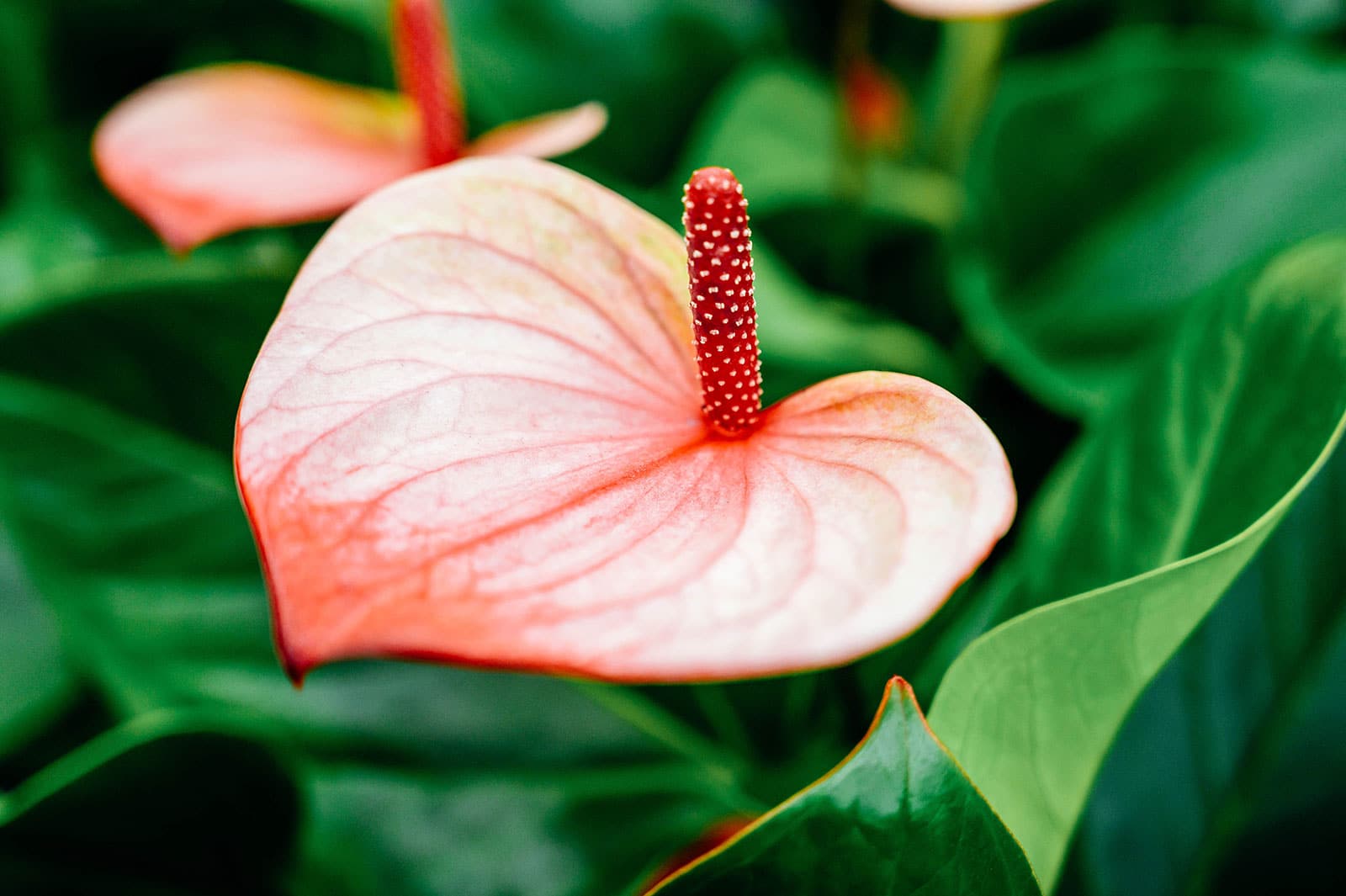
Naturally, Anthurium flowers range from vibrant orange to lipstick red, but hybridization and selective cultivation have resulted in a range spanning from white to green to pink and everything in between.
Natural habitat
Obviously, the Anthuriums you’ll find in your local plant store don’t technically have a natural habitat. They’re man-made hybrids produced through crossing different types of Anthuriums. Scientifically, these hybrids are collectively referred to as Anthurium andraeanum (Hort.).
There is, however, an “original” plant: Anthurium andraeanum Linden ex André. This name refers to the horticulturists who first described it, with André having collected it in Colombia in 1876. It’s only in this country and Ecuador that the plant is naturally found, although it’s also an invasive species in other regions, including the Caribbean.
In its natural habitat, Anthurium andraeanum can be found in tropical forests, which are characterized by their limited light and high humidity. They’re mostly epiphytes, meaning they grow on and climb other plants (like trees) in a non-parasitic manner. (Other epiphytes you might be familiar with as houseplants include string of turtles, heart Hoyas, air plants, arrowhead plants, and Christmas cacti.)
Cultural significance and uses
Anthurium has been commercially grown since at least the start of the 20th century, so it has quite a history behind it. It’s a commercially significant plant in various areas, but as described by the University of the West Indies, it has been a bumpy ride:
“Jamaica became the largest exporter into the US in the 1980’s, which coincided with the decline of the anthurium industry in Hawaii triggered by the bacterial blight disease (…). Just as Jamaica was flourishing, it too was hit by bacterial blight disease, which allowed and Trinidad and Tobago to expand its production, soon making [it] the largest supplier to the USA through the late 1980s and 1990s. However, commercial production in Trinidad started to decline by the mid 1990s, again hit by bacterial blight and bacterial leaf spot (…) diseases.”
Today, Anthuriums are still very popular not just as houseplants, but also in the cut flower industry. Their waxy, exotic flowers last quite long and make great additions to bouquets!
Anthurium varieties
With its history on botany spanning 145 years at the time of writing this care guide, horticulturists have had more than enough time to create endless different Anthurium andraeanum hybrids and cultivars.

I’m not even going to try to name them all, but if you want to have a look at some of what’s out there, you can check out the many, many patented cultivars.
Here are a few of my personal favorites:
- Anthurium andraeanum ‘Shibori’: A real head turner, this coveted Anthurium has unique, red and white mottled flowers that look like splashes of paint.
- Anthurium Andraeanum ‘Black Beauty’: You can’t beat the drama of black Anthuriums, and this one is on trend and very stylish with its glossy black (or almost black) flowers.
- Anthurium Andraeanum ‘Zizou’: With bright pastel flowers ranging from blush to mauve, this pink Anthurium really lives up to its name “flamingo flower.”
- Anthurium Andraeanum ‘White Lady’: White Anthuriums are timeless and classy. The frosty white flowers on this variety will acquire a slight hint of pink as they mature.
Did you know? Although it’s not nearly as commonly sold, there’s another Anthurium species that looks very similar to andraeanum. Its name is Anthurium scherzerianum and it sports those same amazing waxy flowers, but you can tell them apart by the curled (rather than straight) flower spathe.
Where to buy Anthurium andraeanum plants:
Caring for an Anthurium
Light and temperature
When trying to figure out how to care for your Anthurium, it’s important to keep its natural habitat in mind. Consider the tropical rainforest, where these plants are part of the understory. They don’t naturally receive all that much light, as direct sun is blocked out by taller trees. Temperature-wise, they’re used to things being pretty toasty.
In the home, this doesn’t mean your Anthurium won’t appreciate plenty of light. You should definitely place yours on a windowsill if you want it to thrive and flower, but it’s best to choose one that doesn’t receive intense afternoon sun.
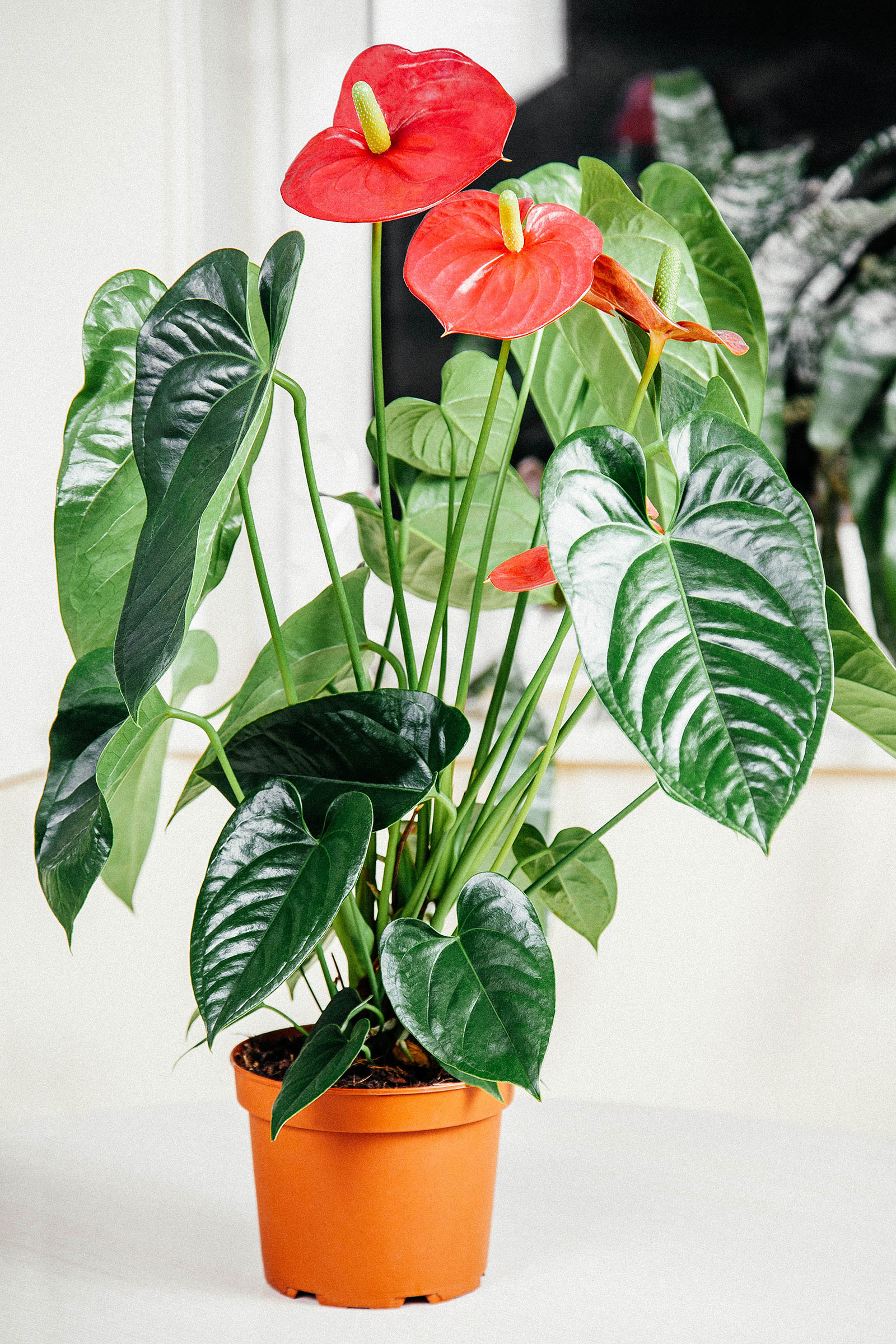
As for temperature, the most important thing is to protect your Anthurium from the cold. Room temperature is fine for these plants. Avoid chilly windows, spots near an A/C unit or drafty hallways, preferably keeping things above 60°F.
The sweet spot for Anthuriums is between 70°F and 85°F. Lower temps may not cause your Anthurium to immediately die, but it definitely won’t grow much.
Water and humidity
The tropical forest is definitely not a dry place, so an Anthurium houseplant absolutely appreciates a drink. Keep your plant’s soil lightly moist (but never wet!) during the summer months when it’s actively growing. Let it dry a little further during the winter months (about halfway), though make sure the soil never goes bone dry.
If you’re not sure how much water your plant is taking up, sticking your finger into the soil to check the moisture level can be helpful.
As for humidity, your Anthurium will appreciate plenty of it. It needs relative humidity to be at least 50 percent, which is much more than the average home interior. If your home is very dry, you may want to grow this one in the kitchen or bathroom. You can also use a room humidifier to boost humidity levels near your plant.
A few times a year, give your Anthurium a refreshing shower (in the sink or the bathtub) to keep its leaves and flowers looking healthy and beautiful.
Read more: The Sneaky Way to Water Your Houseplants (and Why They Love the Shower)
Soil and planting
Like other aroids, Anthuriums don’t appreciate dense potting soil. Something light and airy, but still slightly water-retaining, is a much better idea. Not surprising considering the species’ epiphytic nature! Their fleshy roots barely come in contact with soil in their natural habitat, a bit like an orchid.
Everyone has their own preferred soil mix, so you can experiment to see what works for you. Some options include:
- 1:1:1 mix of orchid bark, perlite, and sphagnum moss
- 3:2:1 mix of orchid bark, perlite, and potting soil
- Pure sphagnum moss
Related: How to Use Perlite to Improve Soil and Boost Plant Growth
Whatever mixture you go for, ensure your plant is in a pot with a drainage hole that allows excess water to escape. Terracotta might dry a bit too quickly for a tropical like this, so unless you’re prone to overwatering, plastic may be a better option.

Recommended products for Anthurium plant care:
- Leaves & Soul Premium Potting Soil for Orchids, Bromeliads, and Epiphytic Plants
- Espoma Organic Potting Mix for Orchids and Bromeliads
- Emily’s Naturals Neem Oil Plant Spray Kit
- Barebones Living Walnut Scissors
Fertilizing
Anthuriums are not too demanding when it comes to fertilizer. You can use some diluted liquid fertilizer with a high phosphorus content during the summer months, when your plant is actively growing, to help stimulate flower production.
Stop fertilizing in winter. Anthurium andraeanum is relatively sensitive to overfertilization; if you see yellowing leaves, you may have overdone it. No sweat! Just flush the soil with distilled water and be sure to go a bit easier on the plant food next time.
Recommended fertilizers for Anthuriums:
- Fox Farm Big Bloom Liquid Concentrate Fertilizer
- Houseplant Resource Center Liquid Fertilizer for Houseplants
- Instant Biologics Instant Plant Food (Fizzing Nutrient Tablets)
Pruning
Aside from removing dead leaves (plants like Anthurium naturally drop their lower leaves once they lose their usefulness), it really isn’t necessary to prune an Anthurium. If you feel your plant is getting too large, it makes more sense to just follow the instructions on propagation or division.
Dividing or repotting
Has your flamingo flower outgrown its planter or has it been a long time since you last gave it some fresh soil? A repot with new soil is probably in order. You can move the whole plant to a larger pot to give it some extra space, but in many cases, you can also divide it. This way, you can easily turn one plant into two or even more!
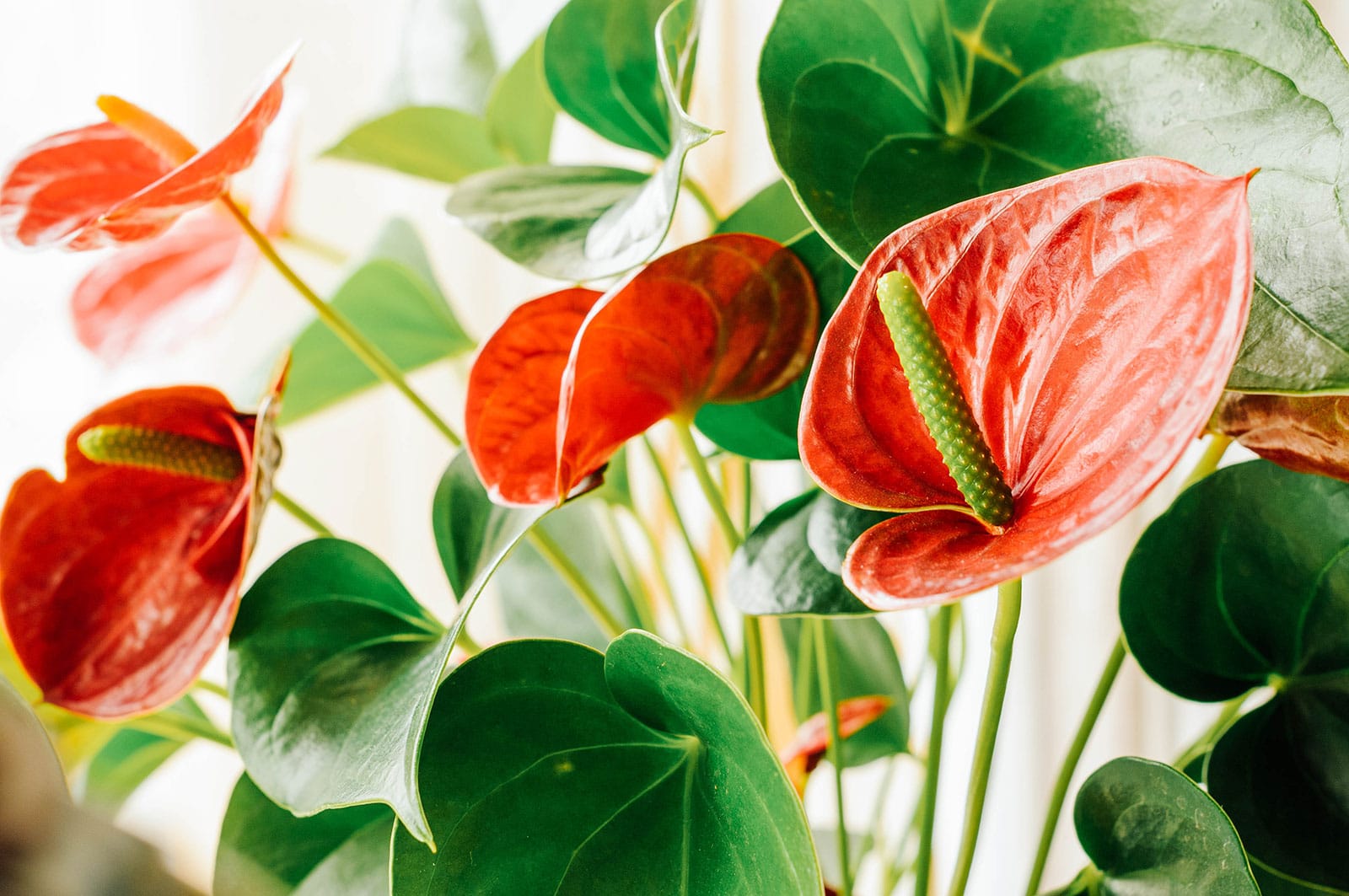
Sometimes your flamingo flower will naturally fall apart into clumps when you take it out of its planter and shake the soil off the roots. If that’s not the case, you can untangle the roots by hand and use a sharp, clean knife to cut through the root ball if need be.
All of the clumps can be potted up separately. They might look a bit cranky at first, but since each already has its own root system, they should keep growing as usual.
Propagating Anthurium
If you don’t want to divide your Anthurium but would still like to propagate it to obtain more plants, there’s another way. A mature Anthurium will have a visible stem, which means that as with many other plant species, you can take stem cuttings.
In order to propagate your Anthurium using stem cuttings, just use a sharp, clean knife or pruning shears to cut the stem at any point you’d like. As long as you include some leaves and a node or so, the propagation process should be quick and painless!
The cutting can be placed in water to root—and in fact, Anthurium is a plant that happily grows in just water—but if you want to grow it more traditionally, you can dip the cutting in some rooting hormone and pop it directly into Anthurium soil or lightly moist sphagnum peat moss.
Bonus points if you have a propagator and heat mat, or place the whole thing in a clear plastic back to keep moisture and heat in.
How do you make an Anthurium bloom?
Anthurium andraeanum is a prolific bloomer that produces flowers for much of the year (including winter, which makes it an ideal holiday houseplant), but it can be a bit picky about its environment. If yours hasn’t produced any flowers for more than a couple of months, it can be handy to read through this care guide again.
The main reasons for flamingo lilies failing to bloom are insufficient light, low temperatures, low humidity levels, too much or too little water or issues like bugs. Check if any of these apply to your plant, correct and give it some time. You could also consider switching to a high phosphorus fertilizer if you were previously using a balanced one.
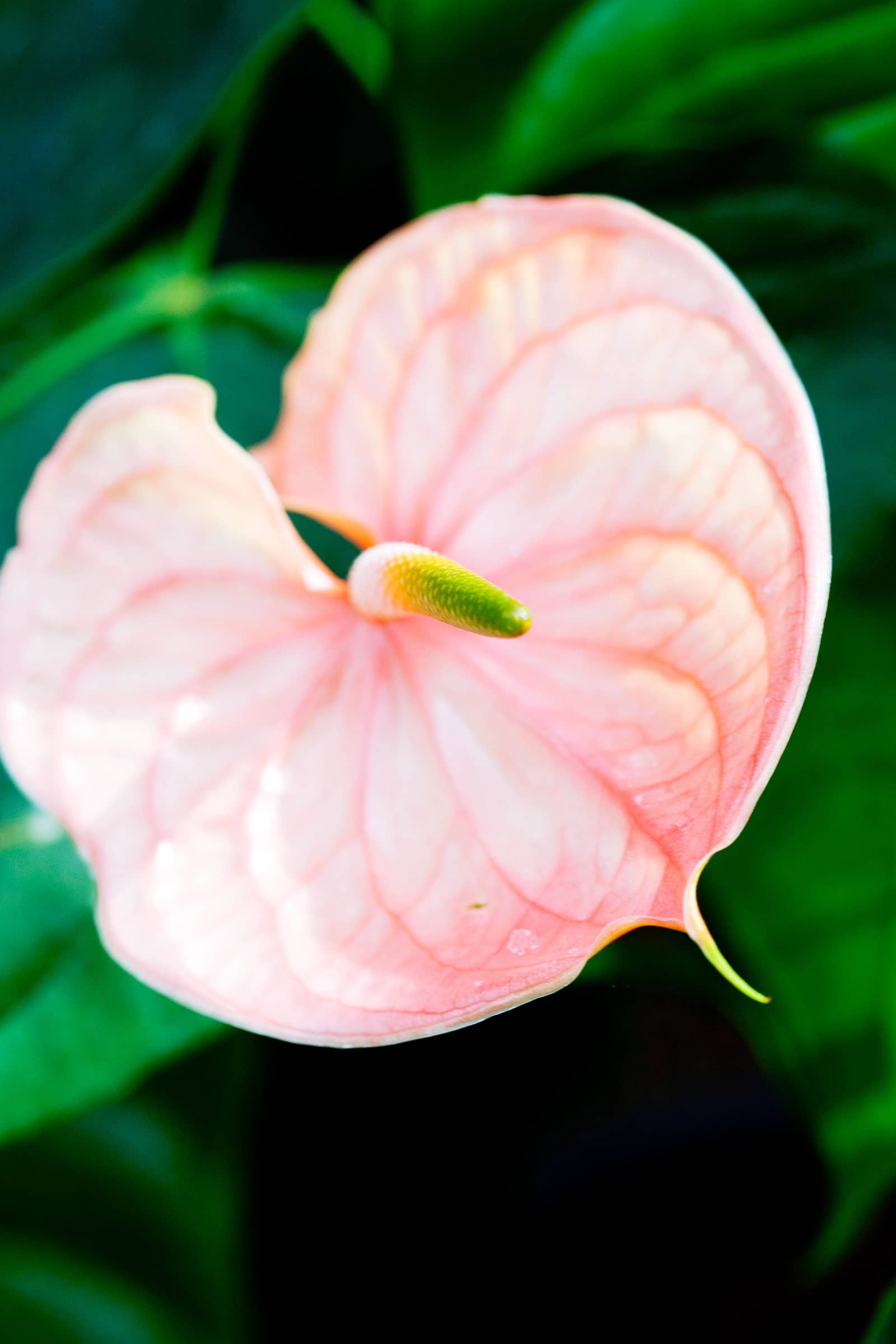
Common questions about Anthurium care
How cold can Anthurium tolerate?
While Anthuriums do best in steady temperatures of 70°F to 85°F day and night, they can tolerate occasional lows down to 45°F. The plants are quite sensitive to cold and won’t thrive if placed near AC units, chilly windows, or drafty hallways.
Do Anthuriums like to be rootbound?
Anthuriums don’t mind being a little tight in their pots, but they definitely don’t like to be rootbound. If yours has outgrown its current container, you should repot it in a new container that’s about 2 inches larger in diameter, or divide the plant into two or more plants.
How long does an Anthurium bloom?
Anthurium flowers usually last about three months and will bloom year-round if given good light and adequate moisture. The plants themselves can live for years, blooming again and again.
What is the lifespan of an Anthurium plant?
With proper care, an Anthurium can live for at least five years or more. However, you can keep an Anthurium around indefinitely by dividing mature plants or propagating new plants from stem cuttings every few years.
Are Anthuriums toxic to cats and dogs?
Like other plants in the aroid family, Anthurium is considered toxic due to its calcium oxalate content. This compound causes irritation, which luckily means that most pets don’t try to take more than a few bites, but it can still result in rashes, swelling and a burning sensation.
By the way, calcium oxalate crystals in Anthurium sap can also be irritating to your hands, so it can be handy to wear gloves if you’ve got sensitive skin.
Source:
Norman, D. J., & Ali, G. S. (2012). Anthurium Diseases: Identification and Control in Commercial Greenhouse Operations. EDIS, 2012(4).


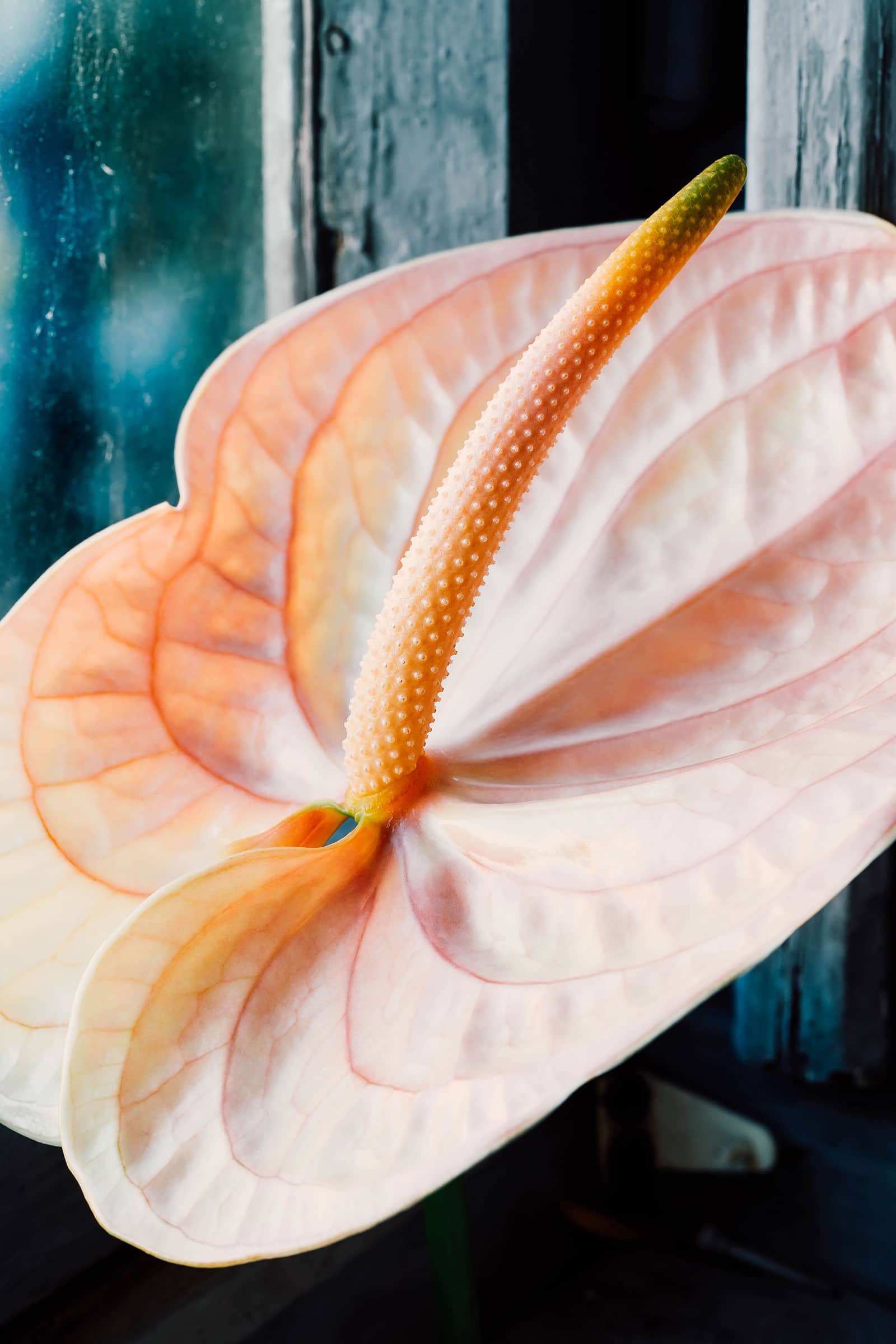













How long should it take an antherium to put out new leaves or flowers?
My leaves keep turning yellow. Too much or too little water?
Unfortunately yellow leaves could mean anything, without knowing other variables. Overwatering, underwatering, nutrient deficiency, too little light, etc.
Thank you. loved your article. It was really helpful for my business.
Wish to see more in the coming days.